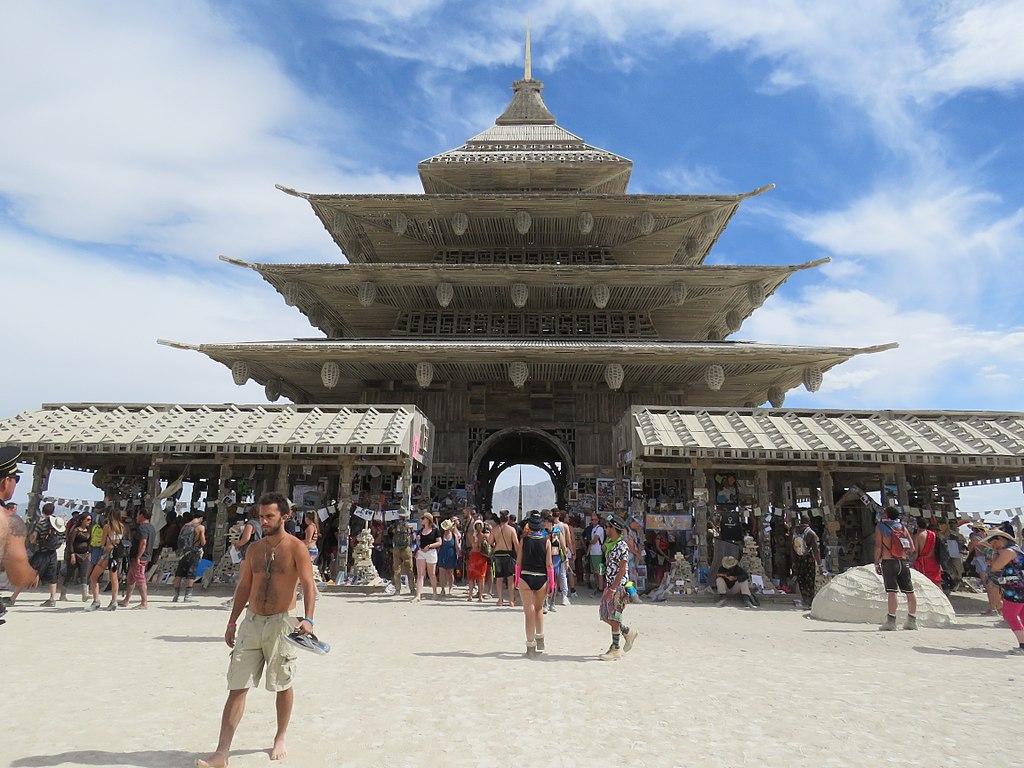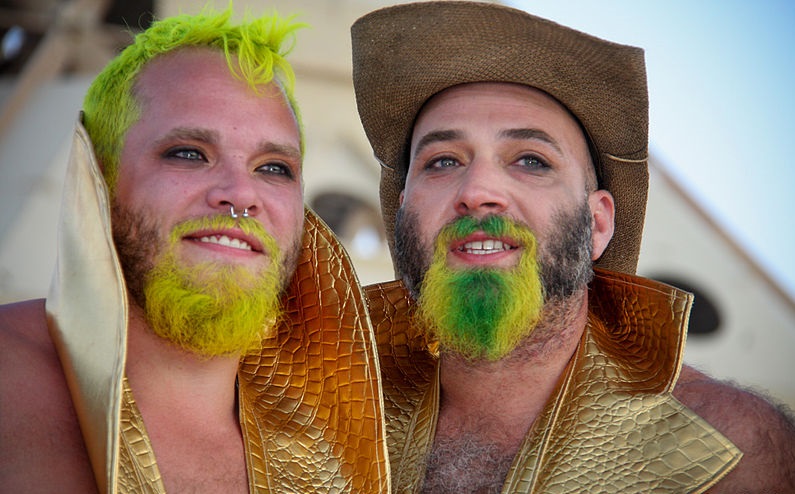For over 30 years, the “Burning Man” festival, which takes place every August in the Black Rock Desert in Nevada, USA, has attracted around 70 000 participants from all over the world, including at least 10% of Europeans.
Starting as a movement of a handful of freelance artists, this cultural phenomenon has evolved into the “Burning Man Project”, a non-governmental organization founded in 2014 with a big ambition and a broad vision—not only to bring people together for a week to form a free, non-monetised community, but also to spread the philosophy and values of the “Burning Man Project” around the world.

The main idea behind the festival is giving. Giving is not only about material goods but also about giving your time, attention, care, and friendship.
You can actively grant favors. Participants in the festival say that this event is an example of how not everything is based on money.

According to the organizers, “Burning Man” is not just a once-a-year festival; it is a community that shares the same values. Many even call this project utopian. It is a utopia that exists in reality but only lasts nine days.
Perhaps the organizers were realistic in their assessment that it could only exist in the diaspora and only for a certain period of time.

The participants themselves organize everything that happens at the festival. Participation is another of the ten key principles of the movement.
Some, of course, come as observers at the beginning, but in the end they all claim that it is not enough for them to take – every now and then they also want to give.
There are even people from professions such as aerospace engineers and physicists, scientists who study sperm, circus performers, and ordinary people who mend shoes or bicycles. They all have something to offer others.

Each participant is also ready to provide a spectacle for those around them, with unusual costumes performing in the streets, bicycle decorations glittering on every corner, futuristic cars cruising by with music blasting from the speakers and people dancing on top of them, all covered in dust. It’s like something out of a “Mad Max” movie.

So, as you can see, all the exchanges that take place during the festival are based on goodwill. Even the food is free. There are usually different campsites in the towns where the party-weary participants can feel like a family and cook together.

Often it is a gathering of different nationalities, all serving their national dishes. Apart from family gatherings, the festival is also famous for its parties, which take place after nightfall.

On the other hand, there’s more than just cooking and partying in the vast area of the town. Everything from lectures to choir performances can be found.
According to the participants, it is impossible to see and try everything. 70,000 people, all presenting their skills and gifts, is no joke.

The town goes by the name “Black Rock” and holds the title of the world’s largest temporary city. It has everything you would find in an ordinary city: streets, hospital, post office, police and fire stations, etc. Most people are advised to bring their bicycles, as this is the best way to cover long distances to reach the various sites.

The art installations alone take up a lot of space. And of course, there are so many of them that it’s impossible to see them all, and they are created by artists from all over the world. Interestingly, on the last Saturday of the festival, most of these installations are burned.

So many hours of work goes to ashes. But this solution is very reminiscent of the principle of performance art, where the process is the most important thing, not the art object. This phenomenon also has a symbolic meaning.
Burning the objects teaches the participants not to form attachments to them. Meaning that the experience is more important than the objects.

During the same Saturday, they set on fire a symbolic wooden statue of a man. And this exact ritual was what inspired the name of the festival.

Another of the “Burning Man” principles is unconditional acceptance of others: everyone involved has the right to express themselves in any way they want, provided they do not hurt anyone.
It is the freedom to be yourself and by being yourself, to find like-minded people and make lifelong friendships.

However, there are some challenges. Everyone must actively prepare to endure in the desert. No help is provided. So the aim is not just to give and show yourself, but to survive in the desert in a nature-friendly way.

At the end of the festival, leaving not a single piece of trash is a requirement, and participants arrive with massive mobile homes – campers – equipped with water, food, clothing, tools, and other necessities for nine days.

As you might expect, while everything is free during the festival, the preparation itself is an expensive affair, costing anywhere from $1,300 to $20,000, including food, transport, camping fees, costumes and gifts. And the ticket itself costs money. Typically, the price ranges from 425 to 1 400 dollars.

Scientists are also interested in the “Burning Man” movement. Research has been carried out from religious, art historical, sociological, psychological, cultural geography, anthropological, architectural and marketing perspectives.
It has been observed that the culture of giving and sharing has given the participants in the movement the connotation of pilgrims and worshippers, instead of being perceived as mere observers, consumers, gamblers.

Take a look at the festival through the eyes of Ukrainian traveller Anton Ptuskin.
If “Burning Man” had to be shortly defined, it would be a global cultural movement based on ten principles, most of which have been listed in this article.
It has reached not only over 30 states in the USA, but also countries such as Canada, Spain, France, Sweden, South Africa, New Zealand, Australia and Israel.
Similar festivals have been launched in Lithuania, with the same freedom of expression and 10 principles.




